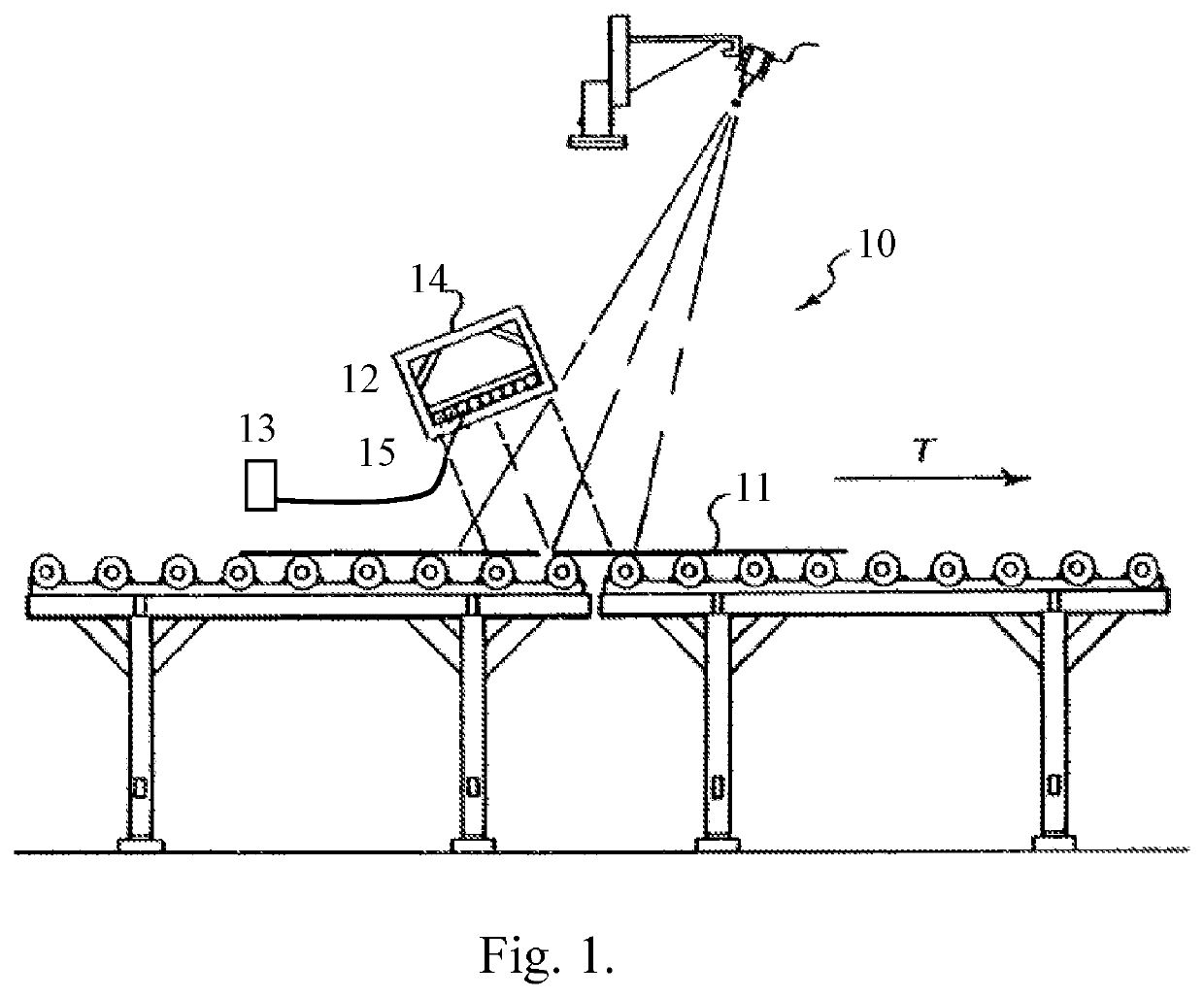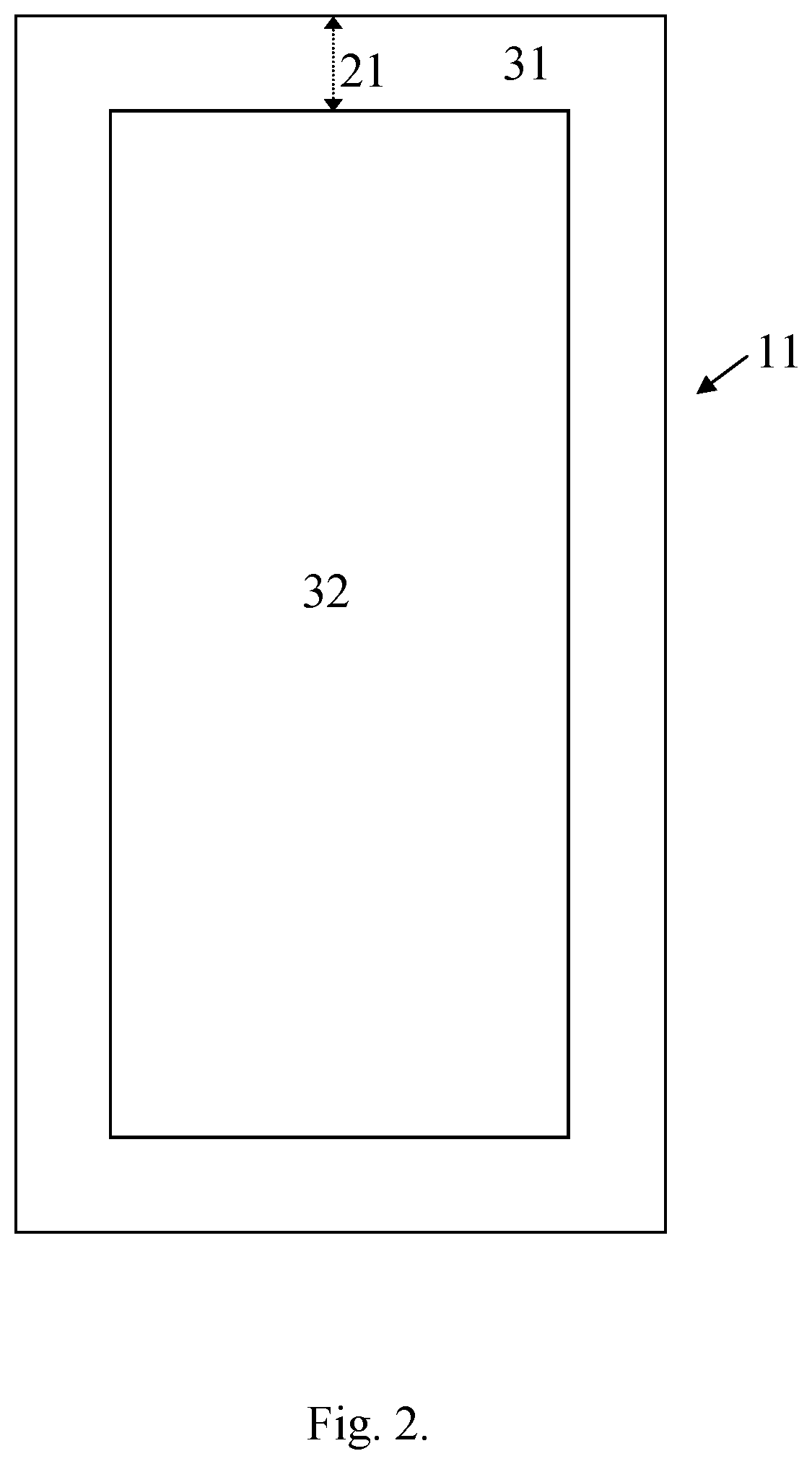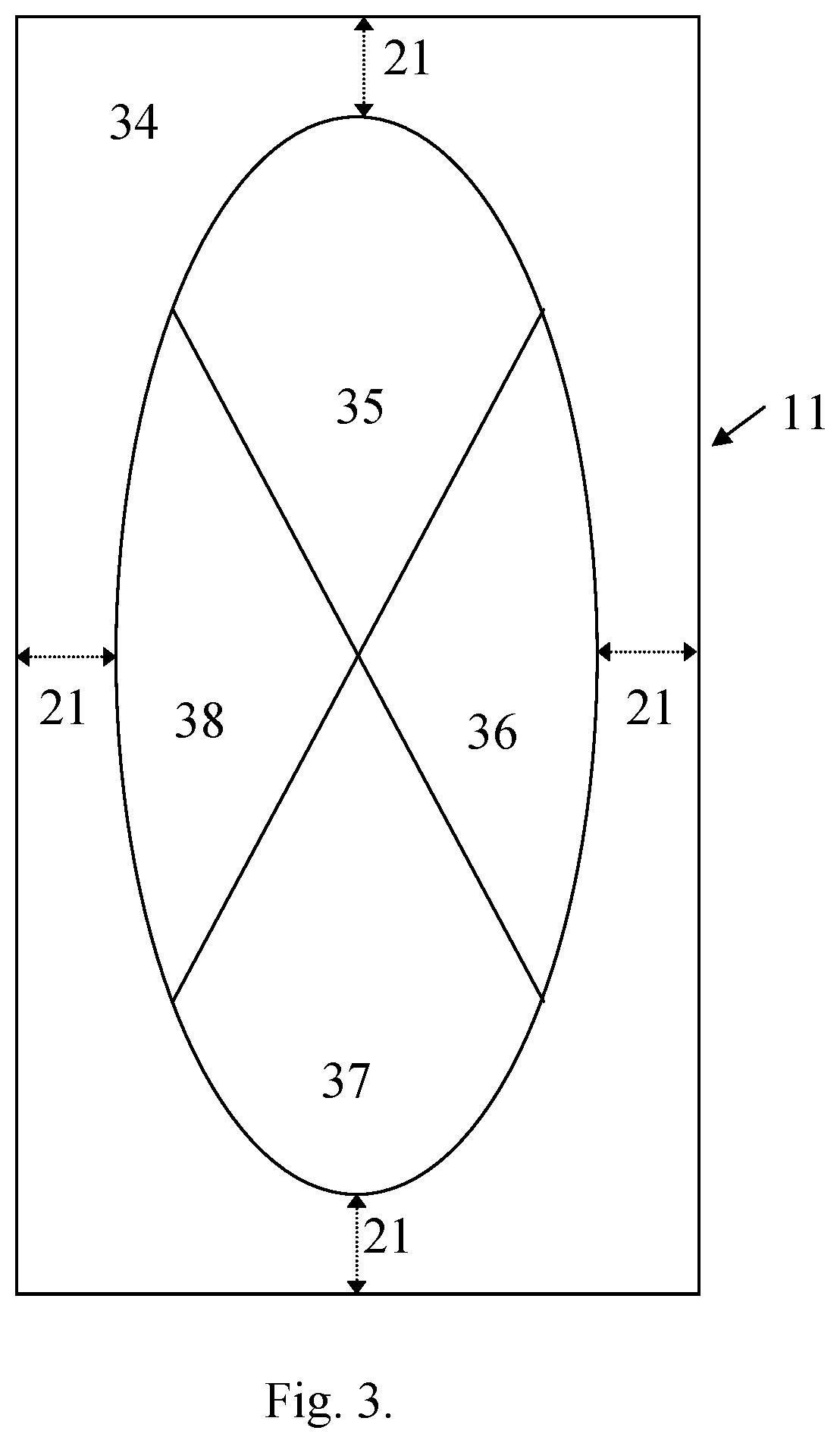Inspection, analysis, classification, and grading of transparent sheets using segmented datasets of photoelasticity measurements
- Summary
- Abstract
- Description
- Claims
- Application Information
AI Technical Summary
Benefits of technology
Problems solved by technology
Method used
Image
Examples
Embodiment Construction
[0043]This invention describes an apparatus and methods for inspecting, analyzing, classifying, and grading the quality of transparent sheets using statistical analysis of various segmentations of a data set of photoelasticity measurements, segmentations A-H, see FIGS. 1-9. Statistics are generated for the various areas of the segmented data set of photoelasticity measurements and mathematical and logical combinations of the statistics of the segments can be directly correlated to physical and optical characteristics.
[0044]A preferred embodiment of the apparatus 10 includes: a computing system 12 capable of inputting, segmenting, and analyzing spatial maps of retardance; a thickness sensor 13 for measuring and inputting the actual thickness of the transparent sheet 11 thereby allowing residual stress to be computed from the retardance data; a display device 14 to display the results to a machine operator; and a storage device 15 and to store critical data and results from the statis...
PUM
 Login to View More
Login to View More Abstract
Description
Claims
Application Information
 Login to View More
Login to View More - Generate Ideas
- Intellectual Property
- Life Sciences
- Materials
- Tech Scout
- Unparalleled Data Quality
- Higher Quality Content
- 60% Fewer Hallucinations
Browse by: Latest US Patents, China's latest patents, Technical Efficacy Thesaurus, Application Domain, Technology Topic, Popular Technical Reports.
© 2025 PatSnap. All rights reserved.Legal|Privacy policy|Modern Slavery Act Transparency Statement|Sitemap|About US| Contact US: help@patsnap.com



